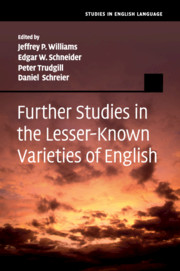Book contents
Part II - The Americas
Published online by Cambridge University Press: 05 May 2015
Summary

- Type
- Chapter
- Information
- Further Studies in the Lesser-Known Varieties of English , pp. 97 - 264Publisher: Cambridge University PressPrint publication year: 2015



